#Employee monitoring system
Explore tagged Tumblr posts
Text
Wasting Time on Administrative Tasks? Automate with Employee Time Tracking Software
Time is money and businesses can not waste precious time on repetitive admin tasks. Manual timesheets, attendance tracking, payroll calculations, and performance monitoring consume time to strategize for growth. Employee time tracking software does just that - it's freeing up an immense amount of time by automating these processes with the elimination of errors and improvements in efficiency.
If you are irritated with administrative overload, it is high time to start using TrackOlap Employee time tracking software . The innovative solution reduces the time wasted on administrative tasks and makes time management very effective while ensuring that workforce productivity is maximized and payroll calculations are highly accurate.
The Burden of Administrative Tasks in Businesses
Managing administrative tasks manually is time-consuming and a waste of effort. Businesses have to face the challenging tasks of tracking attendance even without automation, checking the payrolls, productivity, and project timelines. All these aspects are usually very tiresome and lengthy, mostly resulting in wasted hours and errors, and reduced efficiency overall, all of which curtail business growth. Admin jobs are necessary, but as a rule, they shouldn't fill up most of your days in the office. Many businesses are going through pains such as:
Manual Attendance Trackers: Old ways bring poor records and errors regarding payroll payments with buddy punching.
Time-Consuming Payroll Processing: An HR team works for many hours in just preparing the attendance sheets and calculating the salary.
Employee Productivity Monitoring: Without an adequate system, it becomes so difficult to track work hours and performance.
Project Time Management: Manually Assigning and monitoring project timelines are inefficient and mostly lead to miscalculations.
Lack of Transparency: Organizations still can not track productive hours and optimize employee efficiency with the right tools.
youtube
How Employee Time Tracking Software Automates Admin Work
Automation is the ruling factor in enhancing efficiency. This is what TrackOlap's Employee Time Tracking Software will do for your enterprise:
1. Automated Attendance and Leave Management
Goodbye to old-fashioned punching cards and spreadsheets! TrackOlap makes attendance tracking on a real-time basis:
Automatically capture clock-ins and outs using biometric, mobile, or web-based login systems.
Track leaves, approvals, and over time with an integrated dashboard.
Eliminate human errors in attendance records which ensures payroll processing is accurate.
2. Seamless Payroll Processing
Manual payroll processing creates costly errors. However, with TrackOlap, businesses could:
Automatically generate payroll reports based on accurate attendance data.
Seamless calculation of overtime/deductions/bonuses.
Provide interface with current payroll systems for smooth salary processing.
3. Real-Time Employee Monitoring
Managers are not able to see employees for long during remote or hybrid work models. With the real-time tracking, you can:
Live updates on employee work hours, breaks, and productivity.
Manage project timelines to ensure task completion.
Analyze performance trends to make data-driven decisions.
Gain insight about billable and non-billable hours to help you optimize workflow.
4. Project and Task Management Made Easy
The automation makes it easy to manage multiple projects with a deadline. With TrackOlap, you will:
Assign Work and deadlines with automated notification reminders.
Monitor the real-time progress of any project.
Make detailed reports for measuring the efficiency of a project.
Improve accountability using time spent on every project.
5. Remote Employee Management Made Simple
With hybrid and remote work quickly becoming the office definition norm, it has become imperative for organizations to track work-from-home employees. TrackOlap software offers the following solutions:
GPS-based employee tracking—monitoring field service employees.
Automated work log for productivity checks on remote employees.
Cloud-based capture for seamless tracking of work hours irrespective of the location.
Time-tracking tools integrations that further optimize work productivity while working remotely.
Why Go for Employee Time Tracking Software from TrackOlap?
The best investment made in inappropriate technology will lessen the admin workload by half and multiply efficiencies. TrackOlap Provides:
User-Friendly Interface: Easy implementation and use across teams.
Cloud-Based Access: Secure and real-time data can be accessed anywhere from any device.
Customizable Features: Adaptable software tailored according to business needs.
Accurate Data Insights: Insightful analytics for better decision-making.
Smooth Integrations: Integrate with other business tools such as payroll and HRMS.
Advanced Time Tracking Tool: Maximize productivity using intelligent features in tracking.
Real Business Benefits of Automating Time Tracking
Employee Time Tracking Software automates some administrative work that lightens the load of businesses thanks to:
Productivity Gains: More time for meaningful work rather than manual tasks for employees.
Cost Reduction: Fewer payroll errors, no waste in overtime cost, and financials are more efficient.
Compliance Maintenance: Accurateness in file keeping for labour laws and audits.
Employee Engagement: Trust and accountability arise as a result of transparency in time tracking.
Employee Tracking: The real-time analytics that comes with automated enforcement of policies allow actual workforce management.
Increase Efficiency: A good time tracking system ensures the worker is using time correctly.
How to Get Started with TrackOlap
Implementing TrackOlap Time Tracking Software for employees is simple. Go for a demo and customize the features, onboarding your members will be a piece of cake! Organizations can rapidly automate workflows and increase productivity because of user-friendly interfaces and seamless integrations - Get Optimized Today! Getting fully integrated with Employee Time Tracking Software by TrackOlap is quite easy! The following are the steps that will guide you in getting started:
Sign Up For A Demo: Check how the software suits your business needs.
Customize Your Features: Select attendance, payroll, project tracking, or other modules according to your choice.
Implement & Train Employees: A straightforward onboarding process will facilitate a seamless transition.
Start Tracking & Automating: With implemented workforce management, start benefitting.
Experience a Free Hands-On Demo: Discover how TrackOlap makes digital time tracking and workforce management possible.
Seamless Integration: TrackOlap can easily be integrated within your existing HR and payroll system landscape for quick and smooth implementation.
Looking to Automate? Start with TrackOlap!
Too much time spent dealing with administrative tasks impacts business growth and efficiency. TrackOlap Employee Time Tracking Software allows you to automate attendance, payroll, and project tracking, letting teams concentrate on core business functions. This time-tracking software zeroes in on accuracy by eliminating manual errors and increasing productivity. Automation makes success possible, be it with managing remote teams or optimizing workflows. Take a jump into better workforce management with automation and efficiency like never before through TrackOlap's time-tracking software. Get started right now !
#employee tracking#employee time tracking#employee tracking app#employee time tracking software#employee tracking software#employee monitoring system#Youtube
1 note
·
View note
Text
Best Ways to Introduce Productivity Monitoring to an Organization
How to introduce productivity monitoring to your organization?
In any organization, large or small, public or private, there are always opportunities to increase productivity. Another alternative is to keep track of the productivity of your employees. You can do this in various ways, but it is essential to do it in a way that is respectful of employees' privacy and does not create a hostile work environment. Let us learn about it in detail.
What is productivity monitoring software?
Productivity monitoring software is a type of software that helps manage employees' workflow. It also helps ensure that employees are not wasting too much time on social media or other activities that do not contribute to their productivity.
One can use the productivity monitoring tool in various ways depending on the company and its work culture. For instance, some companies use it to ensure that all their employees are working at least 40 hours a week, while others use it to monitor employees' time on social media or online shopping.

Tips on how to introduce productivity monitoring to your organization
To ensure that your organization runs as efficiently as possible, you may consider introducing productivity monitoring. You can discover areas where improvements can be made by charting employee productivity.
To ensure you don't encounter any issues when implementing such a system, consider these things:
1. Be Transparent to your Employees
Employee monitoring is a controversial topic. Some people think monitoring employees is unethical, while others believe it's necessary to maintain productivity. To be transparent and make sure that the employees are happy, employers should have a set of clear rules on how they monitor their employees.
Employers should also be okay with their employees about what they are tracking and why they are doing it.
2. Communication: Update your employees and managers
In a globalized and digitalized world, keeping employees updated with the latest information is necessary. Using different approaches to update employees, such as remote meetings, video conferences, or even online training, is essential. Communication is a vital component of your workplace. Quality-minded when it comes to how you communicate is just as important as what you actually say.
3. Encourage Ownership: Share the data to improve productivity
Employee monitoring is a process of tracking and recording employee's activities and helps managers analyze, evaluate and improve the performance of their employees. Employers can monitor their employee's productivity with a remote environment, flexible implementation, and tracking. The goal is to inform employees about what they are doing wrong and how to improve their performance.
Employers can use this data to find out which team members are more productive than others. They can also see which tasks require more effort from the employee's side and should be prioritized accordingly.
4. Ensure Remote culture
Remote work culture is a relatively new concept, and it's one that many people are wary of. It helps to increase employee productivity and reduce absenteeism. To keep track of employees, companies use different tools that monitor their activity and location. The most popular tool is software that tracks employees' office hours, remote work hours, and breaks taken.
Having a remote culture in an organization is crucial so that employees feel comfortable with the environment they are working in. It is vital to have a remote culture in an organization so that employees feel comfortable with the environment they are working in.
5. Recognize Privacy Concerns
With the prevalence of remote workers, flexible schedules, and remote settings, it's now more challenging to know what your employees are doing at home or at work. This can lead to many privacy concerns. There are many ways to implement employee tracking and monitoring, but choosing one that suits your needs best is essential.
Observing your employees will help you keep track of their performance and ensure they are engaged in work in accordance with your expectations. The program will help you determine if any suspicious activity or actions are taking place over a remote distance.
Ending Up the blog:
To conclude, it is essential to consider all the potential risks and benefits of introducing productivity monitoring to your organization. Both efficient manual and automated forms of productivity tracking exist. As you decide if you'd like to implement productivity monitoring, it's a good idea to choose an approach that is respectful of your workers' privacy.
You can use the Time Champ software to make it more effective among employees. The Time Champ tool is an ideal way to keep track of employee productivity and identify areas where improvements are made. Implementing a productivity monitoring system can help your organization reach its full potential.
0 notes
Text

In this infographic, we break down how the bold act of loud quitting—when employees leave their jobs in a vocal or dramatic way—can actually spark meaningful change in the workplace.
0 notes
Text
How AI-Powered Employee Monitoring Software Enhances Remote Team Management
The rise of remote work has transformed the traditional office environment, offering businesses and employees greater flexibility and freedom. However, managing a distributed workforce presents unique challenges, including maintaining productivity, ensuring accountability, and managing performance effectively. AI employee monitoring software has emerged as a powerful solution, helping organizations overcome these challenges and optimize remote team management.
This article explores how AI-driven monitoring tools can enhance productivity, streamline workflows, and support remote workforce management while promoting a healthy work culture.

The Need for Employee Monitoring Software in Remote Work
The shift to remote work has created a need for tools that offer visibility into employee activities and performance. Unlike traditional office settings where managers can observe work habits directly, remote work requires digital solutions to bridge the gap.
Employee monitoring software provides managers with insights into work patterns, tracks productivity, and helps maintain accountability. When combined with artificial intelligence, these tools offer advanced features like productivity analytics, real-time activity tracking, and anomaly detection, enabling data-driven management strategies.
Key Features of AI-Powered Employee Monitoring Software
AI-driven employee monitoring tools come equipped with advanced features tailored to support remote work environments:
1. Real-Time Activity Tracking
AI-powered software offers real-time insights into employee activities, allowing managers to monitor application usage, web browsing, and task progress. This feature helps identify productivity patterns and detect potential issues early.
2. Productivity Analytics
AI algorithms analyze data to provide detailed productivity reports. These insights help managers understand how employees spend their work hours, identify bottlenecks, and optimize workflows for maximum efficiency.
3. Automated Time Tracking
Automatic time tracking features record the duration employees spend on tasks and applications. This helps maintain accurate records of work hours, ensuring fair assessments of productivity and workload management.
4. Screen Monitoring and Recording
Screen capture features allow managers to view snapshots of employee screens at regular intervals. This feature enhances transparency and is particularly useful for industries requiring compliance with strict regulations.
5. Behavior Analysis and Anomaly Detection
AI-driven software can detect unusual behavior patterns, such as sudden drops in productivity or extended periods of inactivity. This helps managers address potential issues before they affect team performance.
Benefits of Employee Monitoring Software for Remote Teams
Implementing AI-powered employee monitoring software offers several advantages for managing remote teams effectively:
1. Enhancing Productivity
Monitoring software helps managers identify how employees utilize their work hours. By analyzing productivity trends, organizations can implement strategies to reduce distractions and improve focus.
2. Supporting Accountability and Transparency
When working remotely, maintaining accountability can be challenging. Monitoring software provides objective data on employee performance, promoting transparency and accountability across teams.
3. Improving Time Management
Time tracking features enable employees to manage their schedules more efficiently. By understanding how time is allocated to different tasks, both managers and employees can optimize work routines.
4. Streamlining Performance Management
AI-driven analytics provide insights into employee performance over time. Managers can use this data to set realistic performance goals, identify top performers, and support employees who may need additional guidance.
5. Facilitating Data-Driven Decisions
The analytics provided by AI-powered software allow managers to make informed decisions regarding resource allocation, project management, and team development.
6. Supporting Compliance and Security
Monitoring tools help businesses maintain compliance with data protection regulations by tracking data access and usage. Additionally, they can enhance security by detecting suspicious activities and preventing data breaches.
Best Practices for Implementing Employee Monitoring Software
While employee monitoring software offers significant benefits, it is important to implement it thoughtfully to maintain trust and a positive work culture:
1. Maintain Transparency with Employees
Communicate openly with employees about the implementation of monitoring software. Explain the purpose, benefits, and how the collected data will be used. Transparency helps build trust and reduces concerns about privacy.
2. Establish Clear Policies
Develop clear guidelines on what will be monitored, how data will be used, and how the software aligns with company objectives. These policies should emphasize productivity improvement and support rather than surveillance.
3. Focus on Performance, Not Surveillance
Monitoring should be used as a tool to support productivity and enhance performance, not as a means to micromanage or invade privacy. Emphasize that the goal is to create a more efficient and supportive work environment.
4. Respect Employee Privacy
Set boundaries to ensure that monitoring only occurs during work hours and in professional contexts. Avoid tracking personal activities or off-hours behavior.
5. Provide Constructive Feedback
Use insights from the software to offer constructive feedback to employees. Highlight positive performance and provide guidance on areas that need improvement.
Real-World Examples of Successful Remote Team Management
Many businesses have successfully used AI-powered employee monitoring software to manage remote teams:
1. TechNova Solutions
TechNova implemented employee monitoring software to manage its remote development team. The software helped identify workflow inefficiencies, enabling the company to streamline processes and improve productivity by 30%.
2. CreativeHub Agency
As a digital marketing agency with a global workforce, CreativeHub used monitoring tools to enhance collaboration and transparency. The software’s analytics helped managers allocate resources effectively, resulting in a 25% increase in project completion rates.
3. FinSecure Financial Services
Operating in a highly regulated industry, FinSecure utilized monitoring software to maintain compliance and security while managing remote employees. The software provided detailed reports on data access and helped prevent potential security breaches.
Challenges of Employee Monitoring and How to Overcome Them
While monitoring software offers numerous benefits, organizations may face challenges related to privacy and employee morale:
1. Balancing Monitoring and Trust
Over-monitoring can lead to a loss of trust among employees. To prevent this, companies should adopt a balanced approach that emphasizes productivity support rather than surveillance.
2. Ensuring Ethical Use of Data
Employee data should be handled ethically and in compliance with data protection laws. Businesses should avoid collecting unnecessary personal information and ensure data security.
3. Avoiding Micromanagement
Monitoring software should not replace healthy management practices. Instead, it should complement traditional management techniques by providing additional insights and supporting informed decision-making.
Conclusion
AI-powered employee monitoring software is a valuable tool for managing remote teams effectively. By providing real-time insights, enhancing productivity, and promoting accountability, these tools empower managers to maintain high performance standards in remote work environments.
However, to achieve the best results, businesses must implement monitoring software with transparency, respect for privacy, and a focus on productivity enhancement rather than strict surveillance. By maintaining a balanced approach, organizations can foster a positive work culture that supports remote employees and drives business success.
As remote work continues to evolve, leveraging advanced technologies like AI-driven monitoring tools will become increasingly important for businesses aiming to stay competitive, productive, and agile in the modern workplace.
#employee monitoring software#remote employee monitoring software#AI employee monitoring software#AI employee monitoring system
0 notes
Text
Streamlined Time and Attendance Management for Enhanced Workforce Efficiency
Effective time and attendance management is crucial for maintaining workforce productivity and compliance. Advanced systems leverage technology like biometric devices, mobile apps, and cloud-based platforms to track employee work hours accurately. These tools provide real-time data on attendance, overtime, and leave, ensuring seamless payroll integration and better workforce planning. Businesses can minimize errors, enhance efficiency, and focus on strategic growth by automating attendance processes.
More info: https://ahalts.com/solutions/hr-services/outsourcing-time-attendance
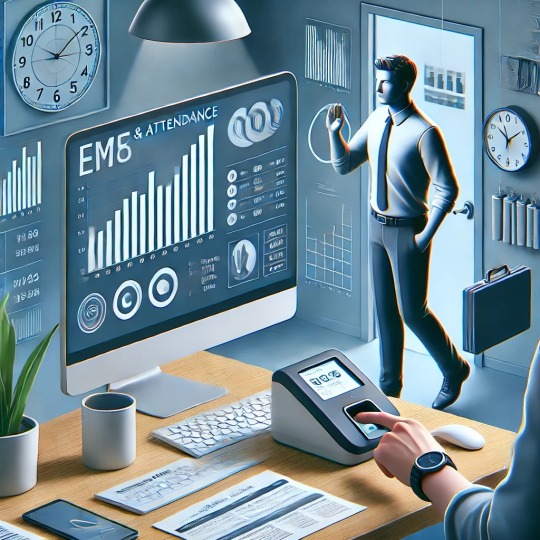
#Time and Attendance Management#Biometric Attendance#Employee Time Tracking#Attendance Software#Workforce Productivity#Leave Management#Work Hours Monitoring#Automated Attendance System#Real-Time Tracking#HR Solutions
0 notes
Text
10 Ideas for Enhancing Your Performance Appraisal Process
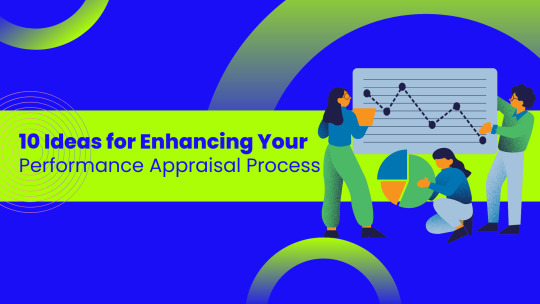
In today’s fast-paced work environment, traditional performance appraisals often feel like a relic of the past—something to check off a list rather than a genuine opportunity for growth and connection. Employees want rapid, constructive, and engaging feedback, and businesses are increasingly recognizing the importance of nurturing talent to achieve success.
Consider a performance appraisal process that does more than just assess past performance; it actively promotes employee development, fires motivation, and deepens the link between managers and their teams.
In this blog, We will explore ten innovative ideas for enhancing your performance appraisal. These strategies aim to create a more meaningful dialogue, inspire professional growth, and ultimately contribute to a more engaged and productive workforce.
#1 Set Clear Expectations
Before the appraisal process begins, ensure that employees understand what is expected of them. Clear performance goals and criteria should be presented at the beginning of the review period. This transparency helps employees align their work with the company’s objectives, making the appraisal more relevant and constructive.
#2 Incorporate 360-Degree Feedback

360-degree feedback offers a more complete picture of an employee's performance. This strategy involves receiving feedback from a variety of sources, including peers, subordinates, and superiors. By collecting diverse perspectives, you can help employees gain a better understanding of their strengths and areas for improvement.
#3 Embrace Continuous Feedback
Move away from the annual review model and toward continual feedback. This approach encourages regular check-ins throughout the year, allowing managers and employees to discuss performance in real time. Frequent feedback can help address issues as they arise and foster a culture of open communication, reducing anxiety around formal appraisal meetings.
#4 Use Performance Management Software
Investing in performance management software can streamline the appraisal process. These tools often include features for setting goals, tracking progress, and facilitating feedback. With intuitive dashboards and analytics, both managers and employees can easily access performance data, making discussions more productive and focused.
#5 Focus on Employee Development

Shift the focus of appraisals from merely assessing past performance to emphasizing employee development. Appraisals can be used to identify growth areas and establish individualized development plans. Encouraging employees to pursue professional growth can boost engagement and retention rates.
#6 Make It a Two-Way Conversation
Encourage a two-way dialogue during the appraisal process. Instead of a one-sided review, create space for employees to express their thoughts, concerns, and aspirations. This collaborative approach not only builds trust but also allows managers to understand their employees' perspectives.
#7 Recognize and Reward Achievements
Incorporate recognition and rewards into your appraisal process. Recognizing an employee's accomplishments can increase morale and motivation. Consider implementing a structured reward system that aligns with performance monitoring outcomes, whether through bonuses, promotions, or public recognition.
#8 Utilize Goal-Setting Frameworks

Consider implementing goal-setting frameworks such as SMART (Specific, Measurable, Achievable, Relevant, Time-bound) or OKRs (Objectives and Key Results). These frameworks can provide clarity and direction, ensuring managers and employees are aligned on performance expectations.
#9 Offer Training for Managers
Train managers on effective appraisal techniques to ensure they provide constructive and actionable feedback. Training can cover active listening, delivering difficult messages, and setting SMART goals. Empowered managers are better equipped to support their teams through the appraisal process.
#10 Solicit Employee Feedback on the Process
Lastly, gather feedback from employees about the performance review process itself. Understanding their experiences and perspectives can provide valuable insights into what works and needs improvement. Use surveys or focus groups to collect input and be open to making adjustments based on their suggestions.
Also, watch this video - EmpMonitor | Leading Employee Engagement and Workforce Productivity Tool
youtube
Conclusion
Enhancing your performance appraisal system is essential for fostering a productive and engaged workforce. By implementing these ten ideas, you can create a more effective and supportive appraisal system that benefits employees and the organization. Remember, the goal of performance appraisals should not only be to assess performance but to inspire growth, development, and a culture of continuous improvement.
#performance appraisal#employee monitoring#appraisal system#360 degree appraisal#employee appraisal#Youtube
0 notes
Text
I'll believe that governments want to "empower disabled people to achieve employment" when they actually:
Legislate broader work-from-home abilities for jobs that don't actually require in-office presence
Strengthen employment discrimination laws so employers stop thinking that the easiest way to get around having to accommodate a disabled employee is just to fire them
Actually create systems where they, the government, monitor and enforce accessible environments and building codes. The onus shouldn't be on us to get the money to hire a lawyer and sue our own workplaces to get our basic access needs met.
Include disabled people in minimum wage legislation, instead of leaving legal carve-outs where "substandard workers" can be paid subminimum wage.
Allow disabled people to keep savings accounts of our own, which we don't need anybody else's approval to create or spend
Let us form supportive households, relationships, and marriages without taking away our benefits (especially because this means we have no money of our own if we want to leave those relationships)
Until then, nuh-uh. Fuck off. You're not "empowering" us. You're just pushing us further out onto a perilous ledge because you think you can use inspirational supercrip narratives to force us to perform or die.
#staranise original#ableism tw#disabled employment rights#trying not to be a bleak traumadumping doomer about this#neoliberalism booooooo
3K notes
·
View notes
Text
Stressed For Managing Remote Teams? How Time Tracking Software Can Help!
The most challenging task for now is managing remote workers. It is all about bringing miles-hectic people together and trying to overlap their work life with the new requirements
of jobs. Today, most companies struggle with questions about how to manage their teams effectively but still ensure that productivity and employee satisfaction are maintained. The simplest way to relieve all of these problems and to have an efficient team is time tracking software.
Understanding the Challenges of Remote Management
Remote management has its own challenges. Lack of face-to-face interaction could hinder communication, leading to delays and confusion. Tracking productivity and keeping employees accountable is hard when they work independently. The organization is battling unfamiliar challenges as it makes the transition into one where some company employees are working from home, thereby increasing stress in its domain for managers. The following are just a few examples of the common obstacles encountered:
Communication Gaps
Performance Visibility
Work-Life Balance
Cultural Disconnect
Remote work also has the effect of making personal and professional lives inseparable, while team building and the company culture maintained suffer a lot in terms of going steadily up the hill.
The Role of Time-Tracking Software
Time tracking software has immense potential for addressing such issues by focusing on how employees use their time and thus helping managers make more informed decisions for a healthier environment among employees. Such ways include:
Enhanced Communication
Most Time Tracking Software will also add features for communication to encourage collaboration among team members. It further helps bridge the communication gap usually found in remote settings.
Real-Time Insights
You can determine employee activity in real-time through tracking features of automation . It then allows a timely intervention whenever someone is struggling or disengages.
Performance Evaluation
This feature allows you to create a performance report on pure data rather than speculation. This feature will help in identifying high-performers while bringing to attention those who may need little assistance.
Work-Life Balance
Encouraging employees to report accurately their hours gives way to balance the workload among workers and people who overworking themselves, thus favouring a healthy work-life balance.
Cultural Cohesion
Some advanced Time Tracking Software include those with team recognition and feedback features to maintain a healthy company culture in a virtual environment.
Innovative Features That Come in Handy
To make the best use of Time Tracking Software, look for solutions that offer innovative features like:
Automated Time Capture: This feature relieves manual entry errors and automatically tracks time for a given task.
Mobile Access: Staff should be able to track their time anywhere, giving them flexibility and convenience.
Project-based Tracking: This will let the company see where time is spent between different projects and where resources are allocated.
Analytics Dashboards: Advanced Analytics will help understand productivity levels and trends over time to support decision-making based on data.
Training and Support: Key to Successful Implementation
Implementing a new technology such as Time Tracking Software requires careful planning and support. Important steps include:
Full Training Programs: Employees should be trained on the effective use of the software. Training may include live demos, video tutorials, and written tutorials or guides.
Continuous Support: Employees will have continuous support through dedicated help desks and online channels where they can seek assistance in adapting to the new system.
Feedback Mechanisms: Let them tell you about their experience with the software. Use that feedback to improve and redesign what needs to be improved.
Encouragement for Usage: Offer some incentive for the specific teams or individuals that are perhaps most consistently effective in using the time-tracking software. This could encourage a culture of responsibility and engagement.
Promoting Employee Engagement Through Time Tracking
Installing Time Tracking Software is not just about clocking hours; it's about creating an engaged workforce. Here are some tactics:
Involve Employees in the Process: Accept input from team members on the selection of time-tracking tools. Their buy-in will result in higher adoption rates.
Set Clear Expectations: Explain to employees how the time tracking should benefit their organization and themselves. Stress it's for productivity and not for micromanaging.
Recognize Achievements: Use your time-tracking software data to celebrate milestones and give public recognition to individual contributions.
Encourage Skill Development: Apply insights from time tracking data to pinpoint skill shortages and offer training to fill those gaps. This will illustrate that the organization is interested in their career development.
Champion a Feedback Culture: Create an environment where employees feel free to provide their input on the time-tracking procedure. Regularly ask for their opinions toward improving the software so that they can see their voice alter workplace practices.
With the above strategies, organizations would nurture a workforce that is highly engaged and motivated, leading to increased productivity and job satisfaction.
Future Trends in Time Tracking for Remote Teams
If we look directly at the future most of the trends that will shape Time Tracking Software will also advise the future of remote work management leans as follows:
AI Integration: AI will help in enhancing the data analytics to much deeper insight into employee performance and productivity patterns.
Mental Health: When organizations start realizing how the impact of time tracking tools can reach to issues regarding mental health from the remote workspace, they will take steps to add features concerning promoting well-being, like notifications for too much overtime or reminders for breaks.
Hybrid Work Models: In the future, there will be more hybrid, time-tracking solutions that will also have to be able to accommodate both the in-office and remote workers into one seamless method.
Energy Expenditure Tracking: This new movement will require recording not only the hours worked but also keeping track of mental and physical energy during those tasks. Discovering employees' energies and understanding their relationship to the associated work helps the organisation in determining employee engagement and prevention of burnout in healthier environments.
Voice and Natural Language Processing (NLP): Employees can simply enter their time and manage tasks through voice commands into their Time Tracking Software thanks to an add-on that integrates voice recognition technology. Of course, the addition reduces the complexity of tracking and makes the whole process more intuitive and user-friendly, particularly for those who struggle to use conventional interfaces.
These are trends that showcase the futuristic bending of time tracking tools to make more productive and easier tools for all the employees.https://www.youtube.com/embed/dLXcoPq2NYA
Stay in Control, Even from Afar!
Managing remote employees is that simple and does not need to be too heavy on your shoulders. Companies can achieve that using solutions offered by Time Tracking Software through better communication, greater visibility, improved performance, a well balanced work-life, and a thriving culture among their teams.
While reducing stress for the manager, buying the right tool gives the employee a sense of empowerment from the structure and clarity in their day. While you navigate the maze of modern remote management, why not build a solid time-tracking solution that matches well with your organization turning what would be a challenge into an opportunity for growth and success?
Discover TrackOlap today; check how our world-class and full-suite time-tracking software will redefine your remote management experience.
#employee time tracking software#employee time tracking solutions#employee time tracking system#employee time tracking app#employee time management software#employee time tracker#employee tracking software#employee tracking#employee tracking app#employee monitoring software#employee time tracking
0 notes
Text
Safeguarding Your Valuable Assets: Exploring Laptop Tracking Software
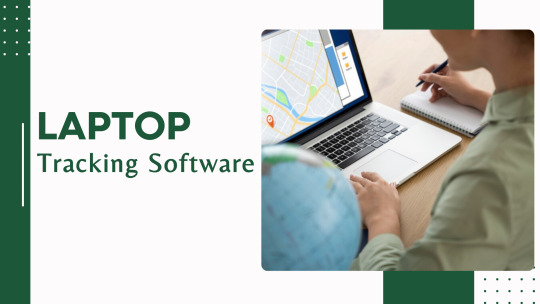
In an increasingly technological world, laptops are becoming necessary tools for business, school, and personal use. But because of their portability, they are also more susceptible to theft or loss. This can lead to security problems if private information ends up in the wrong hands, in addition to the loss of important data and productivity.
Fortunately, laptop tracking software offers a valuable solution for mitigating these concerns. These programs are designed to help individuals and organizations locate lost or stolen devices, potentially increasing the chances of recovery and protecting sensitive information.
While the specific features and functionalities of different software options may vary, they typically leverage various methods to track a missing laptop. This can include:
GPS Tracking: Utilizing built-in GPS hardware or internet-based location services to pinpoint the device's physical location.
IP Address Tracking: Identifying the IP address the laptop is connected to, potentially providing clues about its whereabouts.
Remote Data Wiping: Enabling the remote deletion of data stored on the laptop, safeguarding sensitive information in case of theft.
It's important to note that the effectiveness of laptop tracking solutions depends on various factors, including the specific software capabilities, internet connectivity, and pre-configuration settings. Additionally, legal considerations regarding data privacy and user consent are crucial aspects to be aware of when implementing such solutions.
Exploring laptop tracking solutions can be a wise decision for individuals and organizations seeking to enhance the security of their devices and mitigate the risks associated with loss or theft. By understanding the available options and their functionalities, users can make informed choices to protect their valuable assets and safeguard sensitive information.
Tracking Software For Laptop
Laptop tracking solutions offers a comprehensive solution for locating and recovering lost or stolen devices. By utilizing GPS, Wi-Fi, or IP address tracking, these software solutions enable users to pinpoint the exact location of their laptops in real-time, facilitating prompt recovery and minimizing potential losses.
Why Are Employee Tracking Apps Valuable For Your Business?
Enhanced Security: Employee tracking apps provide an additional layer of security by monitoring the whereabouts of company-issued laptops. In the event of loss or theft, administrators can swiftly track and recover the devices, preventing unauthorized access to sensitive data.
Productivity Optimization: By tracking employee activity and usage patterns, businesses can identify inefficiencies and streamline workflows. Insights gained from tracking software enable employers to optimize resource allocation, identify training needs, and enhance overall productivity.
Compliance And Regulatory Requirements: Employee tracking apps help businesses comply with regulatory requirements and industry standards by ensuring adherence to data protection laws and privacy regulations. By maintaining comprehensive logs of employee activity, businesses can demonstrate compliance in the event of an audit or investigation.
Remote Work Monitoring: With the rise of remote work, employee tracking tools play a crucial role in monitoring off-site employee activity. By providing visibility into remote work environments, businesses can ensure accountability, maintain security standards, and mitigate the risks associated with remote access to company resources.
Risk Mitigation: Employee tracking apps serve as a proactive measure for risk mitigation by identifying and addressing potential security threats or insider risks. By monitoring for suspicious activity or unauthorized access, businesses can take timely action to mitigate risks and safeguard sensitive data.
Track Computer Activity

Tracking computer activity involves monitoring the usage patterns, applications accessed, and online behavior of users on a particular device. This allows administrators to identify potential security threats, unauthorized access, or compliance breaches, enabling proactive intervention to mitigate risks and maintain data integrity.
System Monitoring Tools
System monitoring tools, employee monitoring software, and employee tracking software are essential components of a comprehensive security and productivity strategy for businesses. While system monitoring tools focus on monitoring the performance and health of IT systems, employee monitoring software tracks employee activity and productivity levels.
Employee tracking software, on the other hand, specifically focuses on tracking the whereabouts and usage of company-issued devices, such as laptops, to ensure security and compliance with regulatory requirements. Also Watch: Leading Employee Engagement and Workforce Productivity Tool
youtube
To Sum Up!
In conclusion, laptop tracking software emerges as a vital tool for businesses seeking to safeguard their valuable assets and maintain operational efficiency in an increasingly digital world. By investing in robust tracking solutions, businesses can mitigate the risks of loss, theft, and unauthorized access to sensitive data.
Moreover, employee tracking apps offer added benefits such as productivity optimization, compliance assurance, and risk mitigation, making them indispensable tools for modern businesses. Embrace the power of Laptop Tracking solutions to protect your valuable assets and enhance the security of your organization.
#Laptop Tracking Software#tracking software#employee tracking apps#track computer activity#system monitoring tools#Youtube
0 notes
Text
Employee Monitoring in a Remote Environment: Tips for Success
Remote working has become the norm in today's workplace. Employers must have a remote monitoring system to ensure employees are happy and productive. A remote monitoring system should provide visibility into employees' work hours, locations, and productivity levels. The system should also be able to keep track of the different devices or applications an employee uses at any given time.

Benefits of Employee Monitoring
Do you run your business remotely and wonder if your employees are of benefit to you? After all, if employees are not in the office, how can you be sure they are working? Fortunately, some employee monitoring software options can help you keep tabs on remote workers. These get a few of the advantages of using software of this type.
It builds trust
Employee monitoring has many benefits that help to build trust between employer and employee. By tracking employee activity, employers can see which employees are working hard and which ones may need some help. Since everyone contributes to how things get done, fair treatment is delivered to the entire company.
It frees up time
Employee monitoring can be a valuable tool for employers. It can help them improve productivity and efficiency while freeing time to focus on other aspects of their business. Employee monitoring can help employee monitoring can be a valuable tool for employers. It can help them improve productivity and efficiency while freeing time to focus on other aspects of their business.
If you're looking to start monitoring your employees, there are a few things you need to keep in mind for success:
Be transparent
Being transparent with employees is an excellent initiative toward success. If you are clear about the reasons behind the monitoring, employees will be more likely to trust and accept it. Moreover, employees should know what is expected of them regarding behavior and performance. The managers must ensure that employees have access to the data collected about them and get the necessary feedback about the employee monitoring process.
Set clear policies
An effective employee monitoring system starts with developing clear policies. Define what you expect from employees regarding work hours, productivity, and communication. Be sure to communicate these expectations to employees clearly and concisely. Remember that employee monitoring is not about micromanaging; it's about ensuring everyone is working towards the same goal.
Make sure it's legal
The legal landscape of employee monitoring is ever-changing, and employers must stay up-to-date to ensure their practices are compliant. Ensure you have a legitimate business reason for monitoring employees and get consent from employees before collecting any data. Also, it's essential to give the employees a clear picture of your monitoring policies and keep their data secure and confidential. However, it is always good to destroy the data that is no longer needed.
Allows flexibility
As more companies adopt remote work policies, employee monitoring is becoming increasingly important. It's essential to allow flexibility to the workers and give them some leeway in completing their tasks. This will help to ensure that they are comfortable and productive. Always make a point to use data for employee monitoring wisely.
Emphasize communication
Effective communication between managers and employees leads to successful employee monitoring. By emphasizing communication, managers can ensure that employees are aware of their expectations and can meet them. Monitoring employee productivity can help employers retain talented employees more effectively. By providing emphasized communication, managers can ensure that employee monitoring is used beneficially and improves productivity.
Employee monitoring in a remote environment can be beneficial to both employers and employees. By tracking employee activity, employers can ensure they are productive and not wasting time. Employees can also use monitoring tools to stay on task and avoid distractions. However, it is essential to balance the benefits of monitoring with employees' privacy concerns. When used correctly, employee monitoring can be a valuable tool for both employer and employee. With Time Champ software, remote workers can now monitor their time and provide accurate reports to the company. This gets easy to manage and saves time. The product allows simple deployment and setup and offers a wide range of beneficial traits. Compliance with safety standards makes it suitable for use in any industry. Time Champ Software is the perfect all-in-one solution for employee monitoring in a remote environment. The application empowers payroll personnel to obtain and access accurate and up-to-date info regarding worker performance, enabling them to make effective decisions regarding employee productivity.
0 notes
Text
Key Steps in the Performance Appraisal Process
This infographic is a crucial resource for businesses and HR professionals seeking to enhance their performance appraisal process.
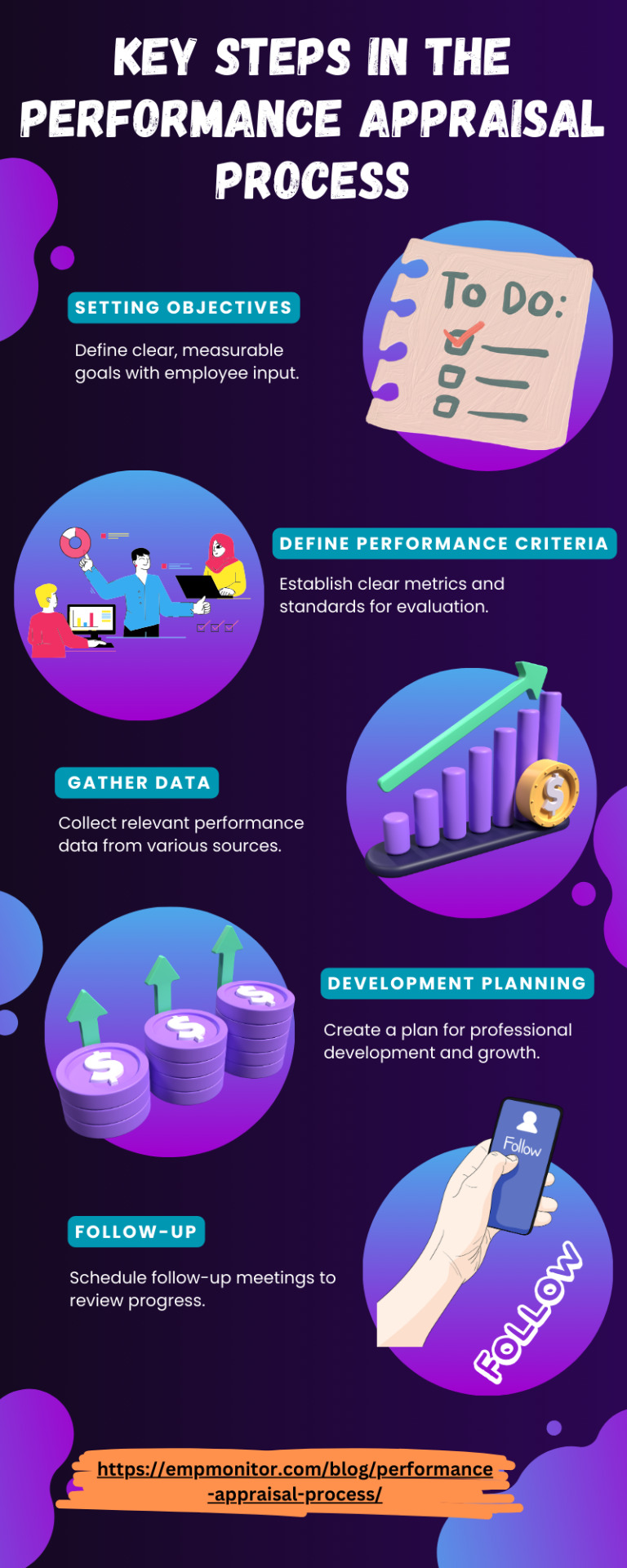
#performance appraisal process#performance appraisal#employee monitoring#performance appraisal system#360 degree performance appraisal
0 notes
Text
The Future of Timekeeping: Employee Cloud-Based Attendance System

Streamlining businesses' operations and improving efficiency are constantly top priorities in today's fast-paced world. One area that has seen significant advancements is employee timekeeping. Traditional methods of tracking employee attendance, such as manual time clocks or paper timesheets, are becoming obsolete. Instead, companies are turning to cloud based attendance system to manage their workforce more effectively.
What Is A Cloud Based Attendance System?
A cloud based attendance system is a digital solution that allows businesses to track and manage employee attendance electronically. Unlike traditional systems, which require physical infrastructure and manual data entry, cloud-based systems store data securely in the cloud. It means that employees can clock in and out using their smartphones or computers, and managers can access real-time attendance data from anywhere with an internet connection.
Benefits Of Employee Cloud Based Attendance Systems
Increased Accuracy: Cloud-based attendance systems eliminate the need for manual data entry, reducing the risk of errors associated with traditional methods.
Cost-Effective: By eliminating the need for physical infrastructure and manual processes, cloud-based attendance systems can help businesses save money in the long run.
Improved Efficiency: With real-time attendance data available at their fingertips, managers can make informed decisions quickly, leading to improved operational efficiency.
Enhanced Security: To safeguard private employee data, cloud-based attendance solutions provide strong security features including authentication and encryption.
Remote Access: Managers can access attendance data from anywhere, making it easier to manage remote or distributed teams.
The Future of Employee Attendance Management System
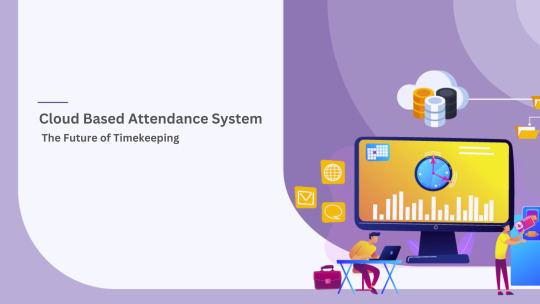
As technology continues to evolve, the future of employee attendance management systems looks promising. The following are some tendencies to be aware of:
Integration with Other HR Systems: Employee attendance systems are likely to become more integrated with other HR systems, such as payroll and project management, to provide a seamless experience for both employees and managers.
AI and Machine Learning: AI and machine learning algorithms can help predict attendance patterns and identify anomalies, allowing businesses to proactively manage attendance issues.
Mobile Apps: Mobile apps are likely to become the primary interface for employee attendance management, allowing employees to clock in and out easily from their smartphones.
Biometric Authentication: Biometric authentication, such as fingerprint or facial recognition, is likely to become more common in employee attendance systems, further enhancing security and accuracy.
The Evolution of Timekeeping Systems
Over the years, timekeeping systems have evolved significantly. From manual punch cards to sophisticated biometric scanners, the way businesses track employee attendance has undergone a dramatic transformation. One of the most significant advancements in recent years is the shift towards cloud-based attendance systems. These systems leverage the power of the cloud to provide real-time attendance tracking and management capabilities, making them a preferred choice for businesses of all sizes.
Benefits of Cloud-Based Attendance Systems
Cloud-based attendance systems offer a wide range of benefits for businesses. One of the key advantages is the ability to access attendance data from anywhere, at any time. This flexibility allows managers to make informed decisions quickly, leading to improved operational efficiency. Additionally, cloud-based systems eliminate the need for physical infrastructure and manual data entry, reducing the risk of errors and saving businesses time and money in the long run.
Future Trends in Employee Attendance Management
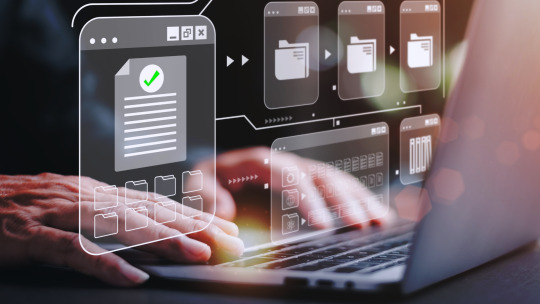
The future of employee attendance management is likely to be shaped by several key trends. One such trend is the integration of attendance systems with other HR systems, such as payroll and keyboard tracking with performance management. This integration will provide businesses with a more holistic view of their workforce, enabling them to make more informed decisions. Additionally, AI and machine learning are expected to play a more significant role in attendance management, helping businesses predict attendance patterns and identify potential issues before they arise.
The Role of Mobile Apps in Employee Attendance Management
Mobile apps are becoming an increasingly popular choice for employee attendance management. These apps allow employees to clock in and out using their smartphones, providing them with greater flexibility and convenience. Additionally, mobile apps can offer features such as geolocation tracking, which can help businesses ensure that employees are clocking in from the correct location. Overall, mobile apps are expected to play a more significant role in employee attendance management in the future, providing businesses with greater flexibility and convenience.
In Conclusion
Cloud-based attendance system is revolutionizing the way businesses track and manage employee attendance. With their numerous benefits and future advancements, these systems are poised to become an integral part of modern workforce management.
#Cloud based system#Attendance Monitoring#Employee attendance system#Attendance management system#Cloud based attendance system
0 notes
Text
The Future of Timekeeping: Employee Cloud-Based Attendance System
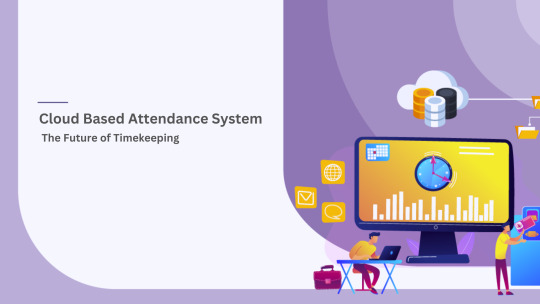
Streamlining businesses' operations and improving efficiency are constantly top priorities in today's fast-paced world. One area that has seen significant advancements is employee timekeeping. Traditional methods of tracking employee attendance, such as manual time clocks or paper timesheets, are becoming obsolete. Instead, companies are turning to cloud based attendance system to manage their workforce more effectively.
What Is A Cloud Based Attendance System?
A cloud based attendance system is a digital solution that allows businesses to track and manage employee attendance electronically. Unlike traditional systems, which require physical infrastructure and manual data entry, cloud-based systems store data securely in the cloud. It means that employees can clock in and out using their smartphones or computers, and managers can access real-time attendance data from anywhere with an internet connection.
Benefits Of Employee Cloud Based Attendance Systems
Increased Accuracy: Cloud-based attendance systems eliminate the need for manual data entry, reducing the risk of errors associated with traditional methods.
Cost-Effective: By eliminating the need for physical infrastructure and manual processes, cloud-based attendance systems can help businesses save money in the long run.
Improved Efficiency: With real-time attendance data available at their fingertips, managers can make informed decisions quickly, leading to improved operational efficiency.
Enhanced Security: To safeguard private employee data, cloud-based attendance solutions provide strong security features including authentication and encryption.
Remote Access: Managers can access attendance data from anywhere, making it easier to manage remote or distributed teams.
The Future of Employee Attendance Management System

As technology continues to evolve, the future of employee attendance management systems looks promising. The following are some tendencies to be aware of:
Integration with Other HR Systems: Employee attendance systems are likely to become more integrated with other HR systems, such as payroll and project management, to provide a seamless experience for both employees and managers.
AI and Machine Learning: AI and machine learning algorithms can help predict attendance patterns and identify anomalies, allowing businesses to proactively manage attendance issues.
Mobile Apps: Mobile apps are likely to become the primary interface for employee attendance management, allowing employees to clock in and out easily from their smartphones.
Biometric Authentication: Biometric authentication, such as fingerprint or facial recognition, is likely to become more common in employee attendance systems, further enhancing security and accuracy.
The Evolution of Timekeeping Systems
Over the years, timekeeping systems have evolved significantly. From manual punch cards to sophisticated biometric scanners, the way businesses track employee attendance has undergone a dramatic transformation. One of the most significant advancements in recent years is the shift towards cloud-based attendance systems. These systems leverage the power of the cloud to provide real-time attendance tracking and management capabilities, making them a preferred choice for businesses of all sizes.
Benefits of Cloud-Based Attendance Systems
Cloud-based attendance systems offer a wide range of benefits for businesses. One of the key advantages is the ability to access attendance data from anywhere, at any time. This flexibility allows managers to make informed decisions quickly, leading to improved operational efficiency. Additionally, cloud-based systems eliminate the need for physical infrastructure and manual data entry, reducing the risk of errors and saving businesses time and money in the long run.
Future Trends in Employee Attendance Management
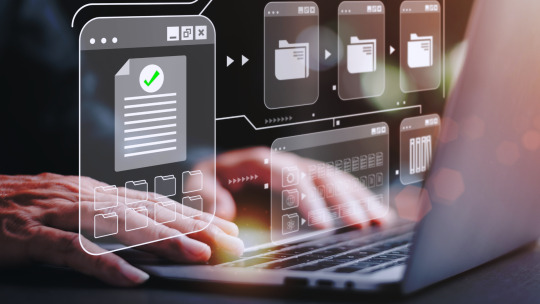
The future of employee attendance management is likely to be shaped by several key trends. One such trend is the integration of attendance systems with other HR systems, such as payroll and keyboard tracking with performance management. This integration will provide businesses with a more holistic view of their workforce, enabling them to make more informed decisions. Additionally, AI and machine learning are expected to play a more significant role in attendance management, helping businesses predict attendance patterns and identify potential issues before they arise.
The Role of Mobile Apps in Employee Attendance Management
Mobile apps are becoming an increasingly popular choice for employee attendance management. These apps allow employees to clock in and out using their smartphones, providing them with greater flexibility and convenience. Additionally, mobile apps can offer features such as geolocation tracking, which can help businesses ensure that employees are clocking in from the correct location. Overall, mobile apps are expected to play a more significant role in employee attendance management in the future, providing businesses with greater flexibility and convenience.
In Conclusion
Cloud-based attendance system is revolutionizing the way businesses track and manage employee attendance. With their numerous benefits and future advancements, these systems are poised to become an integral part of modern workforce management.
#Cloud based system#Attendance Monitoring#Employee attendance system#Attendance management system#Cloud based attendance system
0 notes
Text
AI and Machine Learning in Time Attendance
AI and machine learning are revolutionizing time attendance systems by enabling predictive analytics and smarter workforce management. These technologies analyze employee attendance patterns, flagging irregularities or potential issues such as absenteeism or time theft. Machine learning algorithms can also predict future trends in attendance, helping managers to allocate resources effectively. AI-powered systems provide automated alerts for anomalies and offer suggestions for improving productivity and reducing costs. By integrating with payroll and other HR tools, AI-driven attendance systems further enhance accuracy and streamline administrative processes, making workforce management more efficient.
More info: https://ahalts.com/solutions/hr-services/outsourcing-time-attendance

#AI in time attendance#machine learning attendance system#AI workforce management#predictive attendance analytics#automated attendance monitoring#AI attendance software#machine learning for employee tracking
0 notes
Text
The Power of Access Management System: Securing Your Digital World
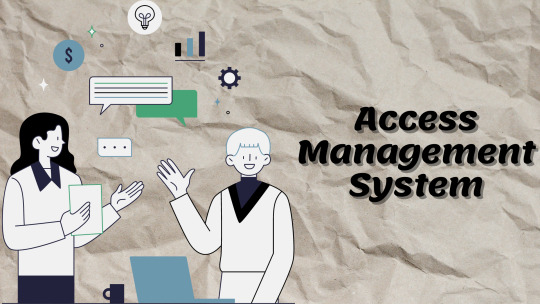
In our increasingly digital world, access management systems have become an essential tool for individuals and organizations alike. These systems play a crucial role in safeguarding sensitive information, securing physical spaces, and ensuring data privacy. In this article, we will explore the importance of access management systems, their key components, and how they can benefit individuals and businesses.
What is an Access Management System?
An access management system is a set of processes, policies, and technologies designed to control and manage access to digital and physical resources. These systems are a fundamental part of cybersecurity and physical security strategies, serving to protect critical data, prevent unauthorized entry, and maintain the privacy of individuals.
Key Components of an Access Management System
Authentication:
Authentication is the process of verifying the identity of an individual or entity before granting access. This can involve something as simple as a username and password or more advanced methods like biometrics (fingerprint or facial recognition) and multi-factor authentication (MFA). Robust authentication methods are vital for ensuring that only authorized individuals gain access to sensitive systems and data.
Authorization:
Once a user's identity is verified through authentication, authorization determines what actions and resources they are allowed to access. This component is crucial for controlling who can perform specific tasks within a system or physical location, preventing unauthorized activities.
Access Control:
Access control is the practice of restricting access to certain areas or data based on the principle of least privilege. This means granting users the minimum level of access required to perform their tasks, reducing the risk of misuse or data breaches.
Auditing and Logging:
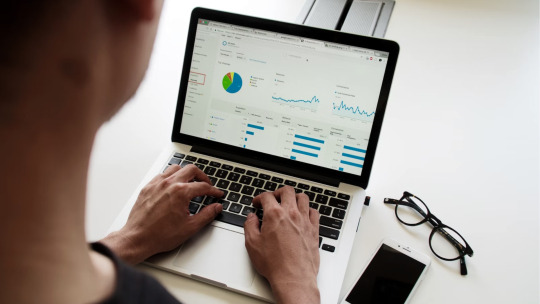
Access management systems often include auditing and logging capabilities to track who accessed resources, what they did, and when. These logs are essential for monitoring and investigating security incidents, ensuring accountability, and maintaining compliance with regulatory requirements.
Single Sign-On (SSO):
SSO is a feature that allows users to access multiple applications or services with a single set of credentials. It enhances convenience for users while maintaining security by centralizing authentication and authorization processes.
Identity and Access Management (IAM):
IAM solutions help organizations manage user identities and their associated permissions efficiently. They streamline user provisioning and de-provisioning, reducing the risk of lingering access rights for former employees.
Benefits of Access Management Systems
Improved Security: Access management systems are at the front lines of cybersecurity. They help prevent unauthorized access, data breaches, and other security incidents, ensuring the confidentiality, integrity, and availability of digital resources.
Compliance:
Many industries and organizations are subject to strict regulatory requirements, such as GDPR, HIPAA, or PCI DSS. Access management systems help maintain compliance by enforcing security policies and providing audit trails for regulators.
Efficiency:
These systems streamline the employee onboarding and offboarding, reducing administrative overhead. This is particularly important for organizations with a large workforce, where manual access provisioning and de-provisioning can be time-consuming and error-prone.
Cost Savings:

Effective access management can lead to cost savings by minimizing the risk of security breaches and data leaks, which can be expensive to remediate. It also reduces the potential for fines and legal consequences resulting from non-compliance with data protection regulations.
User Convenience:
Access management systems can improve the user experience by simplifying access to multiple resources with a single set of credentials. Users are less burdened with the need to remember multiple passwords, leading to increased productivity and satisfaction.
Risk Mitigation:
By enforcing the principle of least privilege, access management systems reduce the risk of insider threats and limit the damage caused by a compromised account. This risk mitigation is essential in today's threat landscape.
Wrapping Up:
Access management systems are the guardians of our digital and physical world. They ensure that only authorized individuals have access to sensitive information, and they play a crucial role in maintaining privacy and security. As our reliance on digital resources grows, the importance of access management system cannot be overstated. Implementing these systems is a wise investment for any organization or individual looking to protect their assets, data, and reputation in an increasingly interconnected and digital world.
0 notes
Text
Top 10 Benefits of Employee Screen Monitoring for Businesses in 2025
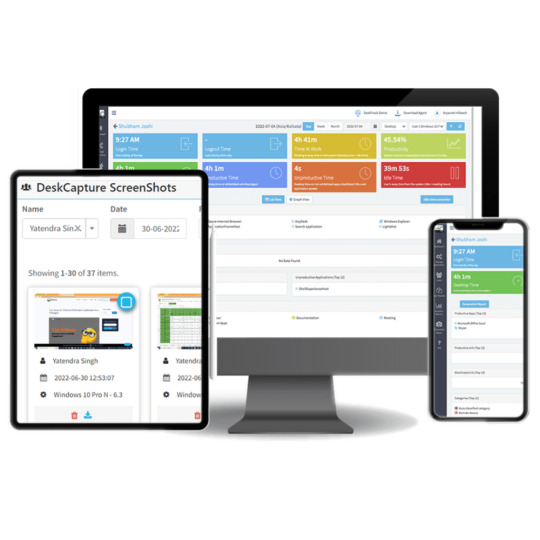
In the rapidly evolving business landscape of 2025, employee screen monitoring has become a critical tool for organizations striving to enhance productivity, security, and overall operational efficiency. As companies embrace remote work and hybrid models, the need for effective monitoring software has never been greater. Here are the top 10 benefits of employee screen monitoring software for businesses in 2025.
1. Improved Productivity
One of the most significant benefits of employee screen monitoring software is its ability to improve productivity. By tracking employees' activities in real-time, employers can gain valuable insights into how time is being spent during work hours. Monitoring tools can identify time-wasting activities, such as excessive social media use, and help employees stay focused on their tasks. With detailed reports on activity, managers can provide constructive feedback and make necessary adjustments to optimize workflow. This leads to greater efficiency and higher output across the organization.

2. Enhanced Security
With increasing cybersecurity threats, especially in remote work settings, employee screen monitoring software plays a vital role in safeguarding sensitive business data. The software can monitor for unauthorized access, detect unusual activity, and flag potential security breaches in real-time. By identifying suspicious behavior, businesses can prevent data leaks, hacking attempts, and internal threats, ensuring that sensitive company information remains protected. This layer of security is especially crucial as businesses continue to store and manage sensitive data online.
3. Better Time Management
Employee screen monitoring can also help employees better manage their time. By analyzing their activity patterns, both employees and managers can identify areas where time is being wasted or inefficiently used. Whether it's spending too much time on non-work-related websites or procrastinating, screen monitoring can serve as a wake-up call for employees to manage their time more effectively. With regular reports and insights, businesses can foster a culture of accountability where employees take ownership of their work habits and strive to improve them.
4. Real-Time Activity Tracking
Employee screen monitoring tools offer the advantage of real-time tracking, allowing managers to oversee employees’ activities as they happen. This is particularly useful in managing remote teams, as it provides employers with an accurate view of what their employees are working on during office hours. With real-time monitoring, businesses can quickly identify potential issues and address them before they escalate. This immediate feedback loop ensures that employees stay on task and can improve overall efficiency.
5. Increased Accountability
Accountability is a cornerstone of high-performing teams. Employee screen monitoring fosters a culture of transparency and accountability by providing clear, objective data on each employee’s activities. When employees know their screens are being monitored, they are more likely to stay focused and avoid distractions. This sense of responsibility encourages employees to manage their time wisely and perform their duties with a higher level of diligence. It also gives managers a fair and unbiased method of evaluating employee performance.
Read More: Which Industries Benefit the Most from Time Tracking Software?
6. Data-Driven Insights for Better Decision-Making
Employee screen monitoring software provides data that businesses can leverage to make informed decisions about workflows, staffing needs, and process optimization. By analyzing productivity data, businesses can identify trends and patterns that might not be obvious through traditional methods. For example, if certain employees are consistently more productive than others, managers can examine their work habits and replicate successful strategies across the team. Additionally, data-driven insights can help managers assess whether existing workflows are optimal or require adjustments to improve efficiency.

7. Compliance with Legal and Regulatory Requirements
In some industries, businesses are required to comply with specific legal and regulatory standards that dictate how employee data is managed and protected. Employee screen monitoring software can help businesses meet these compliance requirements by providing detailed logs of employee activity. This can be especially crucial in sectors like finance, healthcare, and legal services, where compliance is not just a good practice but a legal obligation. By maintaining a secure and accurate record of employee activities, businesses can demonstrate that they are in line with industry regulations and avoid potential legal penalties.
8. Remote Team Management
Managing remote teams can be challenging, especially when employees work from different locations and time zones. Employee screen monitoring software provides a way to bridge this gap by offering visibility into what remote workers are doing. Managers can use monitoring data to check if employees are following the right processes and staying on task, even when they’re not physically present. This added layer of oversight helps build trust between remote employees and managers while ensuring that the business's goals are being met, regardless of the team’s physical location.
9. Reduced Employee Misconduct
Employee screen monitoring software can act as a deterrent to misconduct and inappropriate behavior in the workplace. Knowing that their activities are being monitored discourages employees from engaging in activities that are detrimental to the organization, such as accessing inappropriate websites, stealing company data, or engaging in unethical conduct. This proactive approach helps businesses maintain a professional and ethical environment, leading to a more positive organizational culture.
Read More: Top 15 Best QuickBooks Time Alternatives in 2025
10. Improved Customer Service
Finally, employee screen monitoring can indirectly improve customer service. By ensuring employees are using their time efficiently, businesses can ensure that customer-facing teams are more responsive and focused on their tasks. Monitoring can help identify areas where employees may be struggling or spending too much time on non-essential tasks, allowing businesses to provide better training and support. In turn, this leads to faster response times, higher-quality service, and more satisfied customers.
Conclusion
Employee screen monitoring software offers a range of benefits for businesses looking to enhance productivity, security, and overall operational efficiency in 2025. From boosting time management and accountability to improving data security and remote team management, the advantages are clear. As companies continue to adapt to the challenges of a more digitally connected workforce, employee screen monitoring will play an essential role in optimizing performance and ensuring business success in the years to come. By investing in the right monitoring tools, businesses can create a more productive, secure, and accountable workplace that benefits both employers and employees.
#software#time tracking software#monitoring software#employee monitoring system#employee monitoring software india#employee monitoring software#project time management#best employee monitoring software in india
0 notes